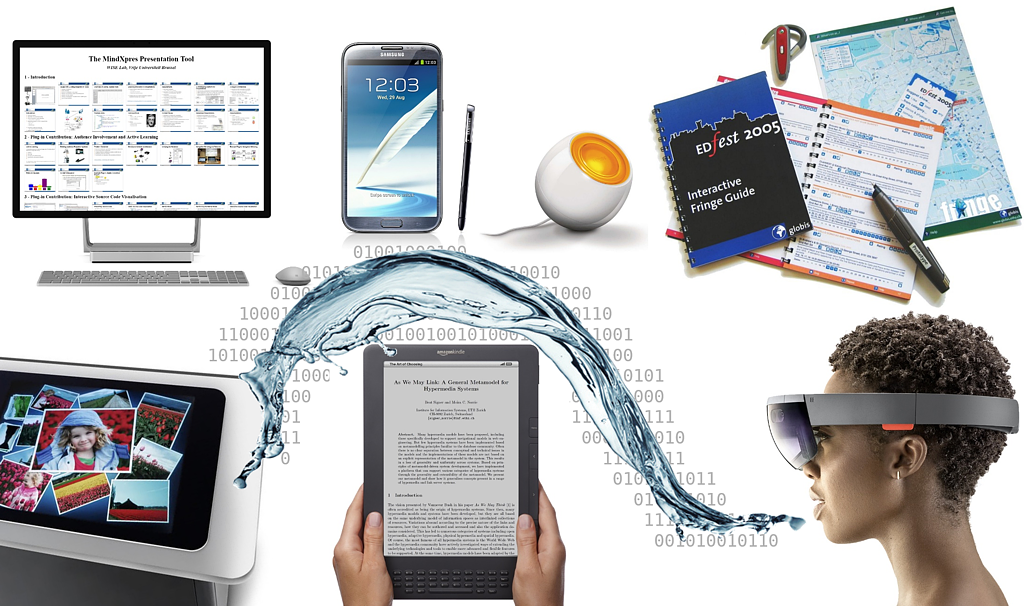Cross-Media Information Spaces and Architectures (CISA)
A majority of today's digital document formats are strongly based on a digital emulation of printed media. While such a paper simulation might be appropriate for the visualisation of certain digital content, it is generally not the most effective solution for digitally managing and storing information. Furthermore, nowadays information is often no longer accessed from desktop computers only but also in mobile settings via different types of media including, for example, digital text, voice or digitally augmented paper.

We investigate conceptual models and architectures for the representation and integration of information across media boundaries. The iServer platform supports the integration of cross-media resources based on the resource-selector-link (RSL) hypermedia metamodel. iServer not only enables links between different types of digital media, but can also be used for integrating physical and digital resources.
The RSL model introduces the general concepts of resources, selectors and links and can be extended for specific types of resources (e.g. interactive paper, HTML pages or movie clips). By implementing media-specific resource and selector instances, arbitrary new media types can be supported. The framework has been used within the European Paper++ and PaperWorks projects for integrating physical paper and digital content and is the main component of the iPaper interactive paper infrastructure. In addition, resource extensions for XHTML documents, movie clips or sound files have been developed. The sharing of link knowledge has been investigated in a distributed iServer version based on peer-to-peer concepts and we have experimented with the use of the RSL model for the implementation of an associative file system that goes beyond the simple single classification of information (files) in hierarchical folder structures.
More recently, we are investigating the feasability of the RSL model for the definition of structural relationships on top of different cross-media information entities. We envision that our structural cross-media model might lead to further discussions about innovative forms of document interfaces and interactions. It is time to question existing document formats which are very much based on the simulation of paper on static desktop computers and to come up with innovative information concepts for the representation of open and fluid cross-media "documents" that are accessible via multimodal interactions.
Related Publications
Related Projects
- A Design Toolkit for Knowledge Physicalisation and Augmentation
- ArtVis - Exploring Information Through Advanced Visualisation Techniques
- eSPACE End-User Authoring Tool for IoT Applications
- iGesture - A Gesture Recognition Framework
- iPaper - Interactive Paper Framework for Paper-Digital Integration
- iRead - Teaching Aids for Rural Indian Areas
- iServer - Cross-Media Link Server
- May AI Help You? Human-AI Interaction in End-User User Interface Development
- Midas - A Declarative Multi-Touch Interaction Framework
- MindXpres - An Extensible Content-driven Cross-Media Presentation Tool
- MobiCraNT - Second Generation Mobile Cross-media Applications - Scalability, Heterogeneity and Legacy
- Mudra - A Unified Multimodal Interaction Framework
- Next Generation User Interfaces for Human-Information Interaction
- PaperPoint - A Paper-based Presentation Tool
- Real-Time Cross-Media Data Exploration and Analysis for Next-Generation Knowledge Workers

